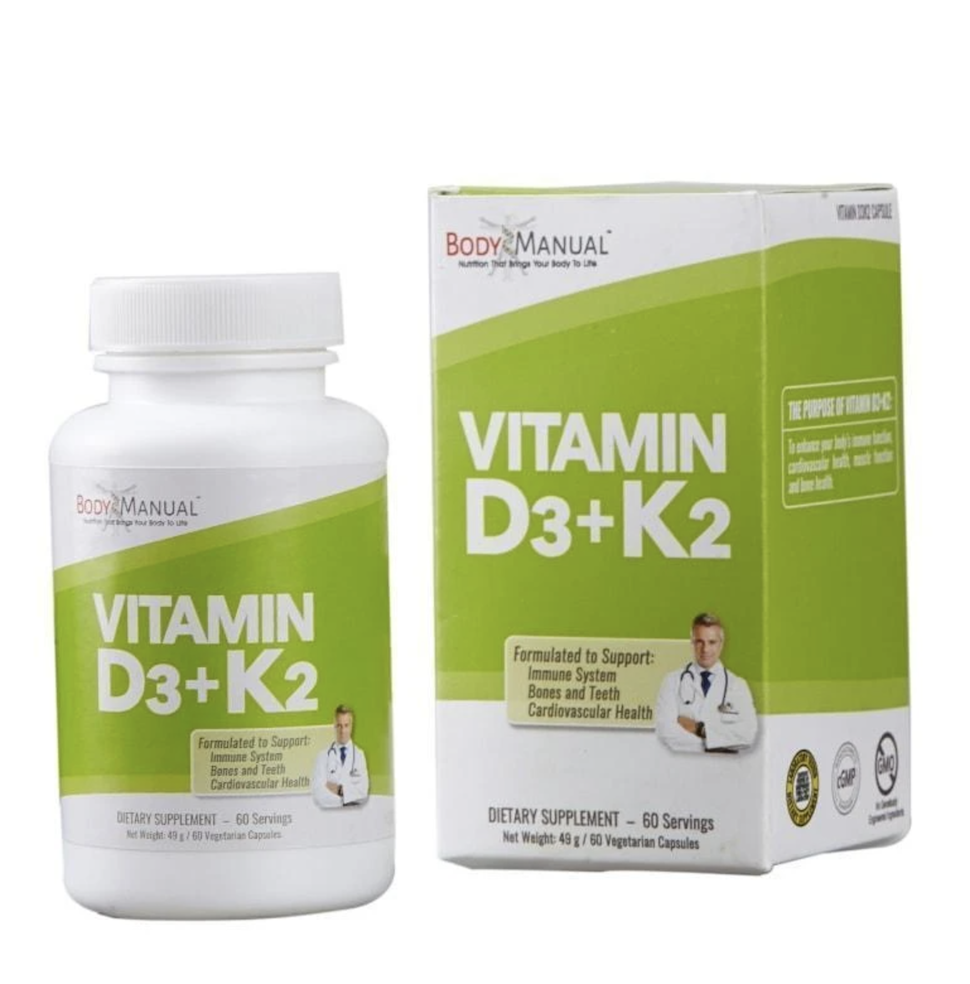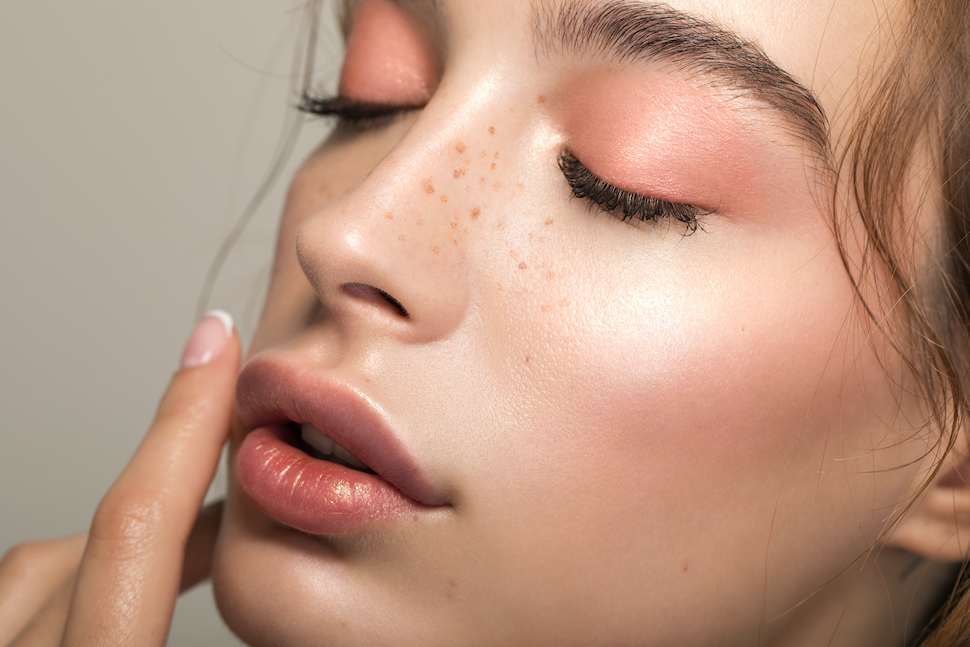Table of Contents
If you lift your shirt just enough to see your stomach or flanks or hike your pants up to see the less sun-drenched parts of your legs, you’ll likely notice the unexposed skin looks years younger than the skin on your hands, arms and face.
Does the sun damage our skin? How much? And how long can we stay outside before that damage sets in?
As it turns out, after it’s given us that beautiful bronze and coveted color, too much sun, sadly, does age our skin—by a staggering amount.
Science Has Spoken
- “The effects of sunlight on the skin are profound, and are estimated to account for up to 90% of visible skin ageing…”1
- “Clinical signs of aging are essentially influenced by extrinsic factors, especially sun exposure. Indeed UV exposure seems to be responsible for 80% of visible facial aging signs.”2
- “Chronic sun exposure causes photoaging, which can be viewed as an environmental damage superimposed on chronological aging.”3
80-90% of Visual Aging Comes from the Sun
In September 2013, six researchers, three of them from L’Oreal’s Department of Applied Research and Development in Paris, France, studied the effects of sun exposure on the skin of 298 Caucasian women who were between the ages of 30 and 78 years old.
As they noted, plenty of studies had already clearly covered the fact the sun has an effect on skin. But much less studied was the exactly quantifiable effect, specifically—“How can we understand, and measure specifically, the clinical effect of sun exposure (photoaging) in facial aging relative to that of chronological aging?”
Chronological aging is your actual age.
Photoaging is the premature aging of your skin…
…caused by exposure to UV radiation from the sun and other artificial sources—things like tanning beds, the mercury vapor lighting in stadiums or school gyms, and halogen, fluorescent, and incandescent lights, according to the CDC.4
Researchers were able to do just that, eventually assigning a numerical value to almost exactly what percent of aging—photoaging, visible facial aging—is caused by the sun:
“Conclusion: Clinical signs of aging are essentially influenced by extrinsic factors, especially sun exposure. Indeed UV exposure seems to be responsible for 80% of visible facial aging signs.”
Though the face is the body part most exposed to UVA, UVB, and sunlight, the lesson holds for all parts of the body.
The Sun Causes Wrinkles, Folds and Pigmentation—But Not Sagging
That 80% effect of sun exposure was seen in coarse and fine wrinkles, pigmentation issues, spotting, and the texture of skin—but not its degree of sagging or laxity.
“The sagging,” researchers say, “is more linked to Earth’s gravity.”
“Signs related to sagging of the tissues are not considered in this study as being linked to the sun.” Further, no statistical differences in degree of facial skin sagging were observed between the sun-seeking and sun-phobic study groups, and sagging was found to be linked more to one’s chronological age than it was to their sun or UV exposure.
Signs of Aging Most Affected by Sun (UV) Exposure
The signs of aging this study found were “most affected by UV exposure” included:
- Wrinkles — Forehead, crow’s feet, glabellar (forehead, above and between the eyebrows), under-eye, upper- and lower-lip, and corner of the mouth.
- Upper-lip and chin texture
- Cheek and jawline folds
- Color contrast of the eye region
- Pigmentation across the whole face
- Malar pigmentation (edge of the eyes; arch of bone beneath the eye)
- Lateral pigmentation (outer maxilla; edge of upper jaw bone)
- Lower face spot density
Dual Protection: UVA & UVB Radiation
Two types of radiation from the sun affect our skin: Ultraviolet A (UVA) and Ultraviolet B (UVB), and we’ll need to protect ourselves from excess exposure to both.
UVA accounts for 95% of the sunlight reaching your skin (or more specifically, reaching the equator). And since you won’t feel its effect, UVA is sometimes loosely referred to as the sun’s “silent killer.”
A sunscreen’s SPF rating reflects its ability to protect from UVA, while “broad spectrum” reflects its ability to protect from the other 5%, UVB.5
Any time daylight is present—sun out or not—to reduce or prevent photoaging, we’ll have to be mindful of sunscreen and skin protection.
Vitamin D: Supplement and/or Sunshine
But the sun is also a prime Vitamin D source, helping us fend off heart disease, osteoporosis, three common cancers, insomnia, and depression.6
So what then? Supplementing is an option, but make it a high quality one. So is spending some time (“5–30 minutes of sun exposure… either daily or at least twice a week to the face, arms, hands, and legs”) in the sun daily to meet the Recommended Dietary Allowance (RDA) of Vitamin D for your age bracket.7

Shop quality supplements.
Get 20% OFF SITE-WIDE with code “Alpha”
And a good sunscreen may help you expand that window of safety—and look better and younger for longer without forgoing the beach.
The French study referenced above also found that a reduction in sun damage of just 5% equated to a staggering reduction in our visual age by a full 3 years.
Done is better than perfect.
Small conscious action pays off well here.
With that, here are some action items that’ll help you stay safe and look younger for longer.
How to Protect Skin From Sun Naturally
- Make sun protection a habit. The best sunscreen is the one you’re most likely to use: broad spectrum and with an SPF of at least 15.8
- Use sunscreen religiously, and make it a safe, non-toxic one.
- Wear sun protective clothing; look for a UPF (Ultraviolet Protection Factor) of 50 or higher.9
- Check if those sexy shades offer 100% protection against UVA and UVB. They should.10
- Use a broad spectrum sunscreen with an SPF of 30 or higher to block 97% of UVB rays.11
- Risk of sunburn is highest between 10am and 3pm; schedule accordingly.
- Skip that carcinogenic tanning bed.12 Depending on how early on you start using them, tanning beds can increase your odds of contracting melanoma by up to 75%.13
- Use a good cosmeceutical with Vitamin C for added protection from UVA and UVB.14
References:
- Farage, M.A., Miller, K.W., Elsner, P. and Maibach, H.I. (2008), Intrinsic and extrinsic factors in skin ageing: a review. International Journal of Cosmetic Science, 30: 87-95. doi:10.1111/j.1468-2494.2007.00415.x
- Flament, F., Bazin, R., Laquieze, S., Rubert, V., Simonpietri, E., & Piot, B. (2013). Effect of the sun on visible clinical signs of aging in Caucasian skin. Clinical, cosmetic and investigational dermatology, 6, 221–232. https://doi.org/10.2147/CCID.S44686
- Rittié, L., & Fisher, G. J. (2015). Natural and sun-induced aging of human skin. Cold Spring Harbor perspectives in medicine, 5(1), a015370. https://doi.org/10.1101/cshperspect.a015370
- Centers for Disease Control and Prevention; UV Radiation
- Skin Cancer Foundation
- Holick M. F. (2004). Vitamin D: importance in the prevention of cancers, type 1 diabetes, heart disease, and osteoporosis. The American journal of clinical nutrition, 79(3), 362–371. https://doi.org/10.1093/ajcn/79.3.362
- National Institutes of Health, Vitamin D
- Skin Cancer Foundation
- Cleveland Clinic
- University of Utah Health
- American Academy of Dermatology Association
- Report on Carcinogens, Eleventh Edition (Ultraviolet Radiation Related Exposures); U.S. Department of Health and Human Services, Public Health Service, National Toxicology Program
- Le Clair, M. Z., & Cockburn, M. G. (2016). Tanning bed use and melanoma: Establishing risk and improving prevention interventions. Preventive medicine reports, 3, 139–144. https://doi.org/10.1016/j.pmedr.2015.11.016
- Farris P. K. (2005). Topical vitamin C: a useful agent for treating photoaging and other dermatologic conditions. Dermatologic surgery : official publication for American Society for Dermatologic Surgery [et al.], 31(7 Pt 2), 814–818. https://doi.org/10.1111/j.1524-4725.2005.31725


